Divina Bugatti. How it started
The first time I shot cars was in 1991 for an assignment from Bugatti Automobili and Franco Maria Ricci Publisher. I had to photograph the twenties and thirties Bugattis for a book, “Divina Bugatti.” This book became later a reference in automotive publishing.
The beginning was very hard; I had to shoot on location at Musée National de l’Automobile at Mulhouse, Alsace, France, but… let me tell my story.
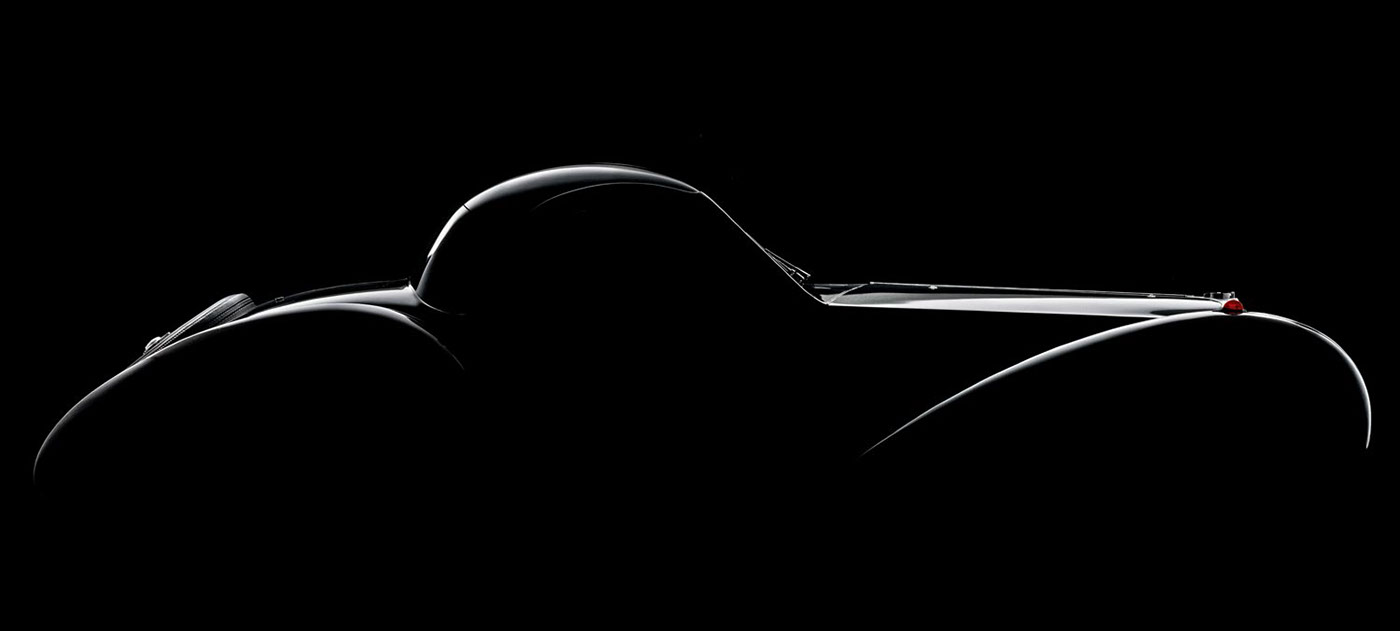
Bugatti Type 57SC Coupé Atalante, a 1938 dream car designed by Jean Bugatti.
The analogic picture is un-retouched. The light control is even more remarkable considering that it has been taken on location.
A curiosity. This photo was the only one rejected by the publisher as "nonobjective, " and the transparency remained in a drawer for 17 years before to become my best seller.
Courtesy: Musée National de l’Automobile, Mulhouse, France.
The analogic picture is un-retouched. The light control is even more remarkable considering that it has been taken on location.
A curiosity. This photo was the only one rejected by the publisher as "nonobjective, " and the transparency remained in a drawer for 17 years before to become my best seller.
Courtesy: Musée National de l’Automobile, Mulhouse, France.
Franco Maria Ricci and Romano Artioli
In 1991, I was working for Bugatti Automobili. One day Franco Maria Ricci, who already desired to celebrate the myth of the Bugatti, suggested to Romano Artioli, the company owner, the idea of a book on the legendary brand. They reached an agreement, and the plan went through. Naturally, Artioli mentioned “the best photographer in the word” to Ricci, actively encouraging my candidacy for the job. Ricci, as expected, was skeptical. “I have my photographers, ones I trust,” he said with a half smile. The persistence of Artioli gained me a meeting with Ricci. “Go and take a few shots; we’ll see,” he said to get rid of me.
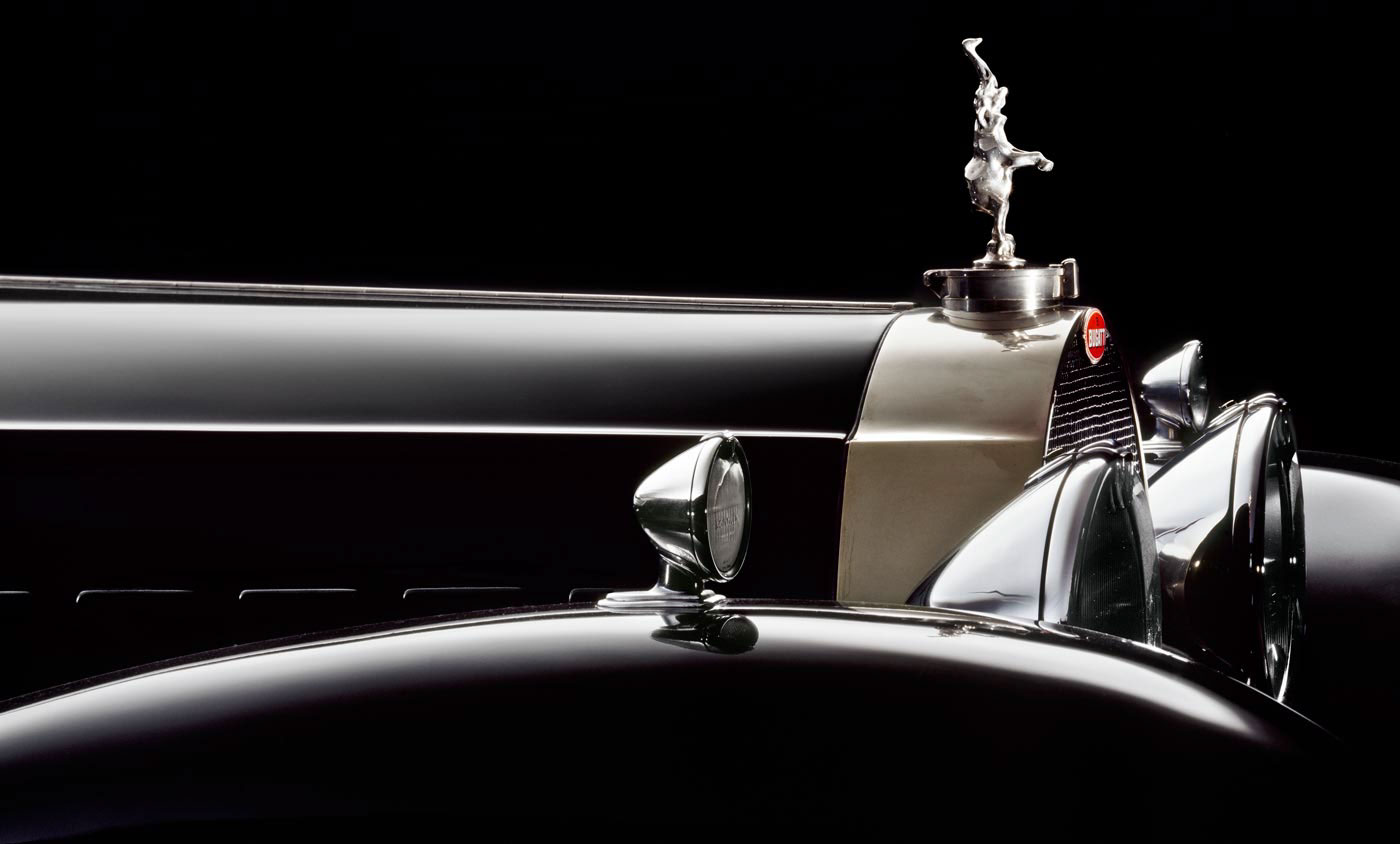
Bugatti Type 41 Royale Coupé Napoleon (1929) The personal car of Ettore Bugatti - Engine:12,763 cc / 779 cu in - Courtesy: Museé National de l'Automobile, Mulhouse
The first encounter with the Divine was a blinding vision. The Bugatti Royale was right there, surrounded by the most famous vintage cars in the world, also Her rivals: the Hispano-Suiza, the RollsRoyce, the Packard and much more, that all looked like humble servants next to the Bugatti. Compared to Her, the others supported antiquated aesthetics and engineering: they looked like luxury stagecoaches with a hood to cover the engine. She was a purebred, beautiful and gracious in its seven meters of length. It has huge, had the biggest wheels, was the longest, the tallest, but still the most graceful. Her functional and aerodynamics lines experimented a unity and a harmony of style that anticipated the “industrial design” of the 50s. That design and form would smoothly conceal the captivating exuberance of an eight cylinder motor for an impressive 12,763 cc capacity that seems to define once and for all the original idea of a car.
The first encounter with the Divine was a blinding vision. The Bugatti Royale was right there, surrounded by the most famous vintage cars in the world, also Her rivals: the Hispano-Suiza, the RollsRoyce, the Packard and much more, that all looked like humble servants next to the Bugatti. Compared to Her, the others supported antiquated aesthetics and engineering: they looked like luxury stagecoaches with a hood to cover the engine. She was a purebred, beautiful and gracious in its seven meters of length. It has huge, had the biggest wheels, was the longest, the tallest, but still the most graceful. Her functional and aerodynamics lines experimented a unity and a harmony of style that anticipated the “industrial design” of the 50s. That design and form would smoothly conceal the captivating exuberance of an eight cylinder motor for an impressive 12,763 cc capacity that seems to define once and for all the original idea of a car.
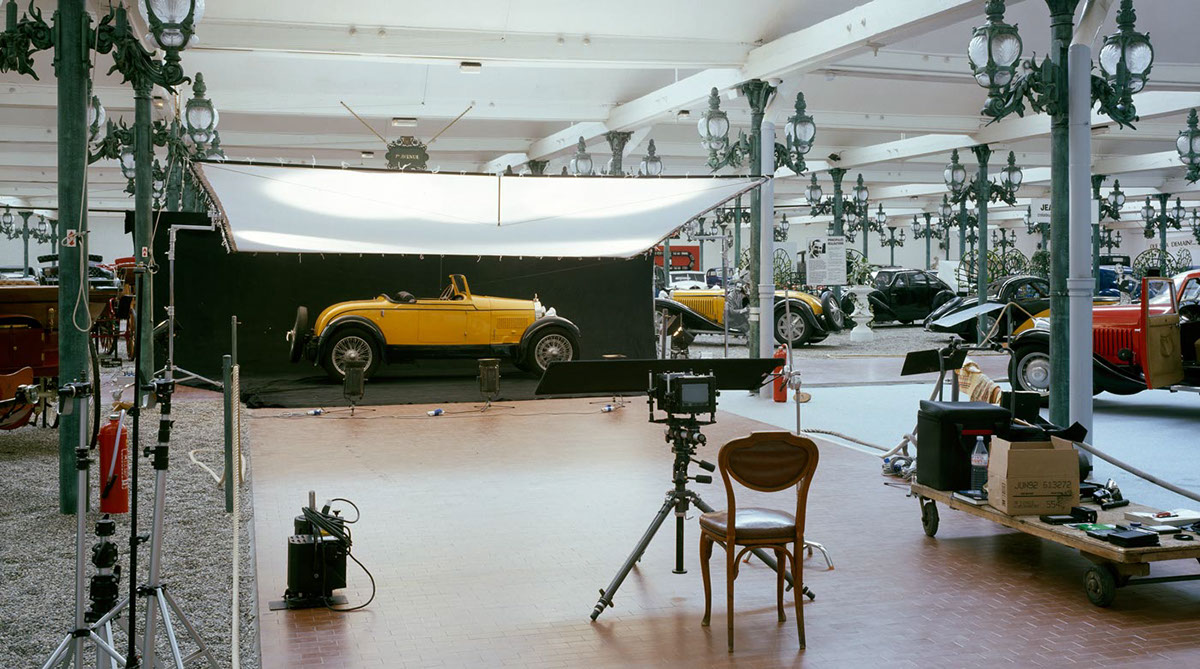
The backstage for Divina Bugatti at Museé National del l’Automobile in Mulhouse, Alsace
I shot this picture, but I changed the position of the lights not to reveal my “professional secrets.” At that time is was not usual to share information.
Years later I shot the Bugattis again with the same lighting and style. See below the video and the linked pages to see how I worked.
I shot this picture, but I changed the position of the lights not to reveal my “professional secrets.” At that time is was not usual to share information.
Years later I shot the Bugattis again with the same lighting and style. See below the video and the linked pages to see how I worked.
A cold night in Alsace
I felt well-equipped on my departure. 145 different accessories in the trunk of my car. For months, I had been working on how to build a mobile set around a Bugatti, on location. Before violating that holy ground, I carried out a test: I photographed a modern car in a large shed. It worked, so I decided to go ahead.
After arriving at the National Museum of Automobiles at Mulhouse in Alsace (among the others 155 Bugattis are kept there), I started my nocturnal marathon. In the dangling atmosphere, in the eery silence, I came face to face with the Divine. The situation reminded me of one of Hemingway’s stories: the bull and the bullfighter still before the charge. I was almost worried that the steel muscles could explode, at any time, in all their power and the beast within could run me over like a train. I had an emotional outburst; I felt like I had a fever. As a robot, I kept shooting and opening Polaroids. I was looking at Her, but I could not see inside Her. Fatigue and tension made everything even more dramatic. “What am I doing in France, in the middle of the night, in the dark of a museum? Why didn’t I stay at home?”, I started thinking.

The car of the "turning point" - Bugatti Type 35B Sport Two-seater, US Coachwork (1927) - Courtesy: Musée National de l’Automobile Mulhouse
The turning point
All of a sudden I had reached the turning point: I opened yet another Polaroid, but this time I found the courage to look at it through a photographer’s eye. I had recognized Her, the Divine, in all her dazzling beauty. “I am yours. Only you will be able to own me”, she was saying. I started dancing like I was in the middle of the Rio de Janeiro carnival parade. I didn’t feel tired anymore. “I did it!”, I said, my voice echoing in the empty museum. I had finally gotten a hold of the situation. I had jumped on the wild horse, and I was riding as a Native American would.
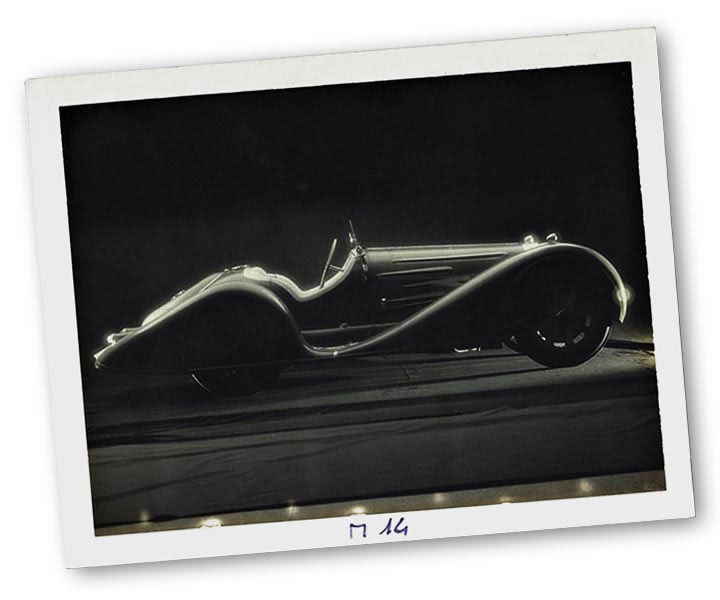
The “turning point” Polaroid. Before this one, I was totally discouraged. After seeing this Polaroid, I realized that I got it.
The Presentation in Milan
I arrived at Franco Maria Ricci’s, feeling confident and appearing as cold-blooded as a contract killer. I knew I was in the presence of one of the most refined editors the world had ever seen, but I also knew that I could not fail: if he had any taste at all – and it could not be otherwise – he could not still be indifferent after seeing my work.
Ricci received me with a smile that was more gentle than polite. The smile you would give a child who is showing you their drawing. After his eyes had settled on the first photo, his expression changed and suddenly brightened. “But they are… lit!” he whispered to himself. “Of course they are! Did you think I would bring you the dark ones?” I answered in a friendly yet amused manner. It felt like I was watching from the outside as if I were the spectator to a film. Franco Maria Ricci picked up the phone. “Come and look at something sensational!” he said and then ran down the corridor enthusiastically. “Call the others and tell them to come to my office!” He looked at me excitedly in front of all his associates, as if I were a superhero, and offered me some incredible projects: on Spanish baroque style, on medieval armor, about the city of Parma, and on French cabinet-makers. He had just assigned me all his future projects.
I had managed to impress Franco Maria Ricci, the king of aesthetics! To think that only a few years before, it was just me and my camera lens!
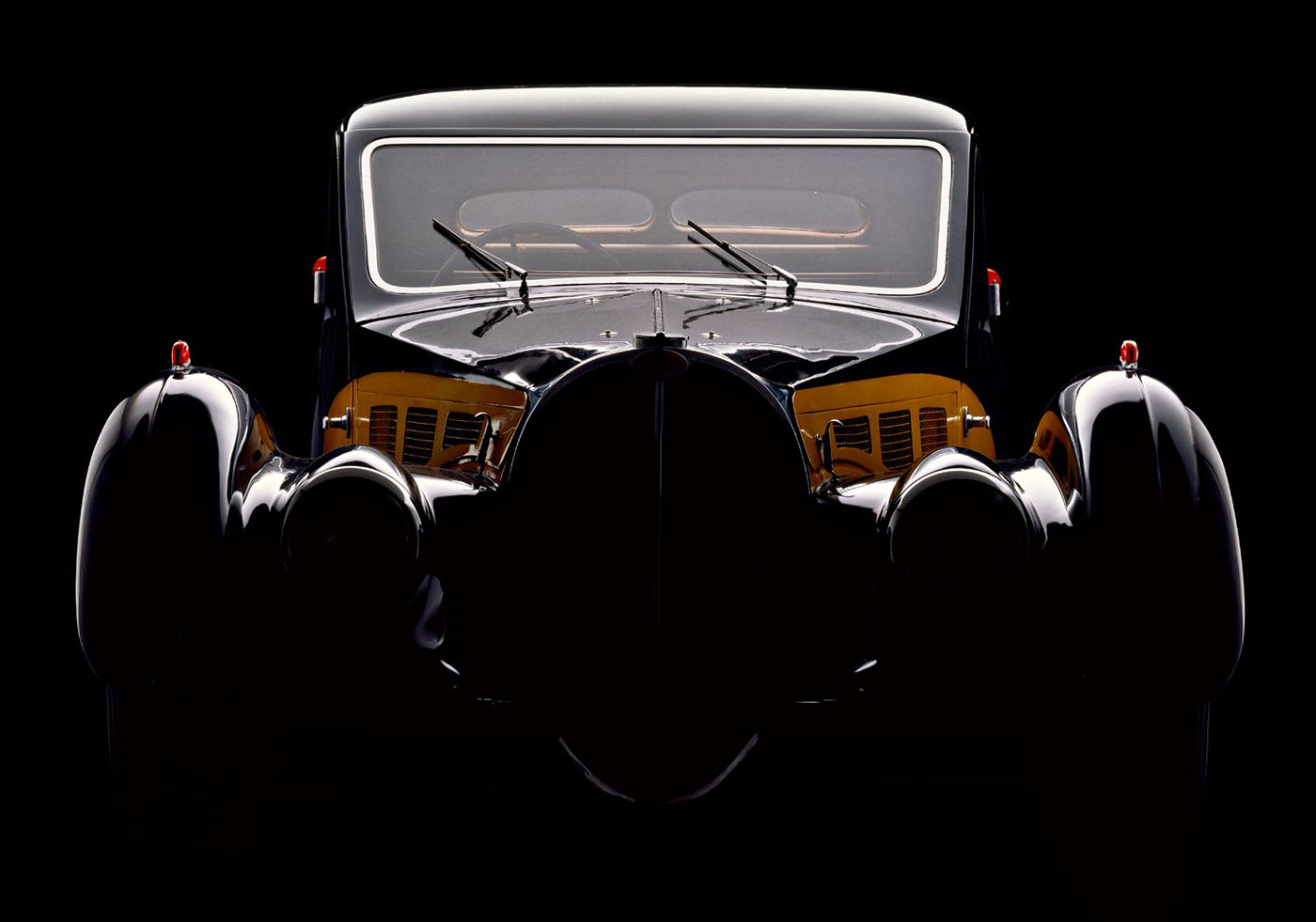
The cover picture of "Divina Bugatti" - Bugatti Type 57 Coupé Atalante. Courtesy: Musée National de l’Automobile, Mulhouse, France.
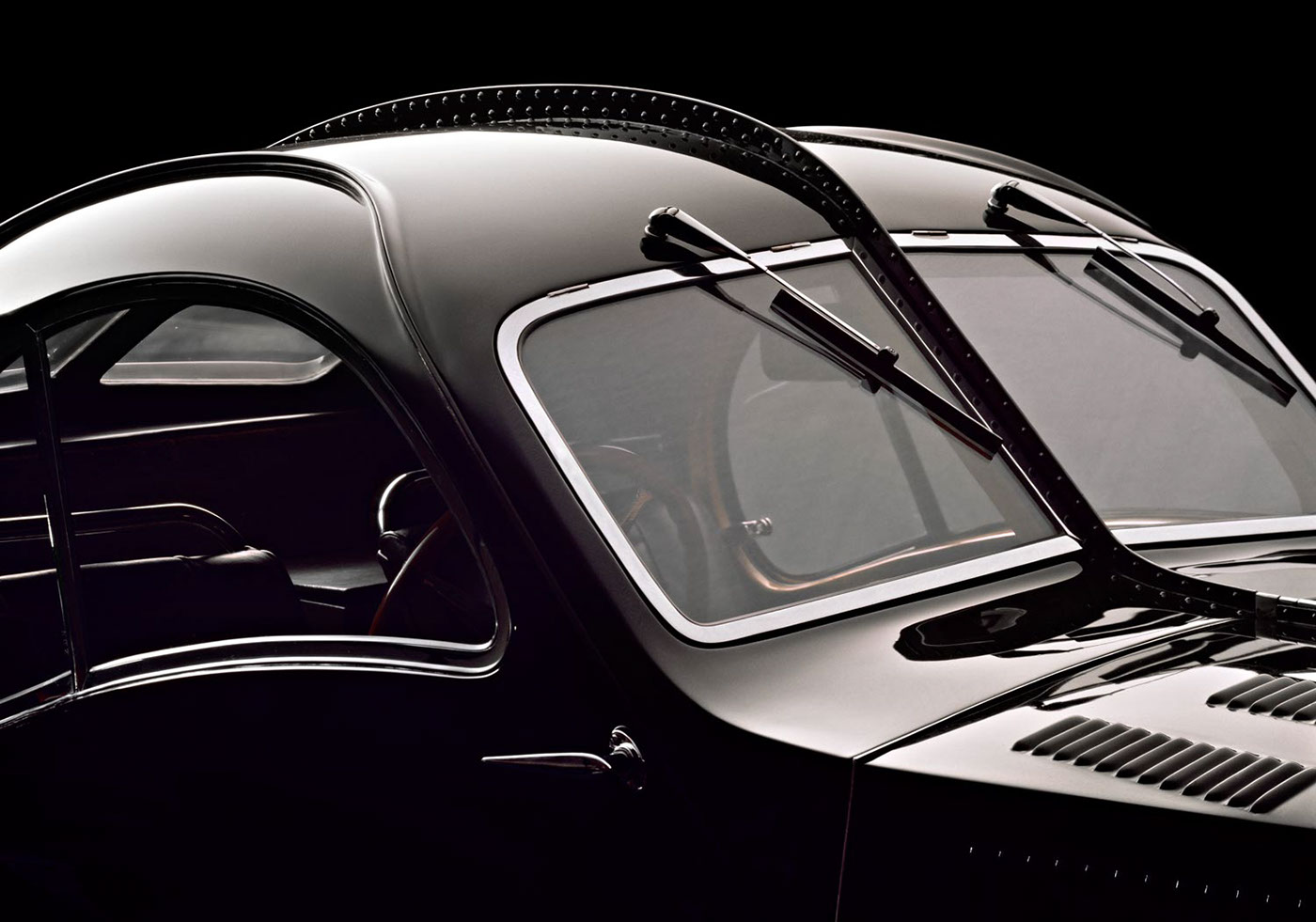
Above and below. Bugatti Type 57SC Coupè Atlantic (1936) - 123 mph/200 kmh, considered by many the first supercar ever made.
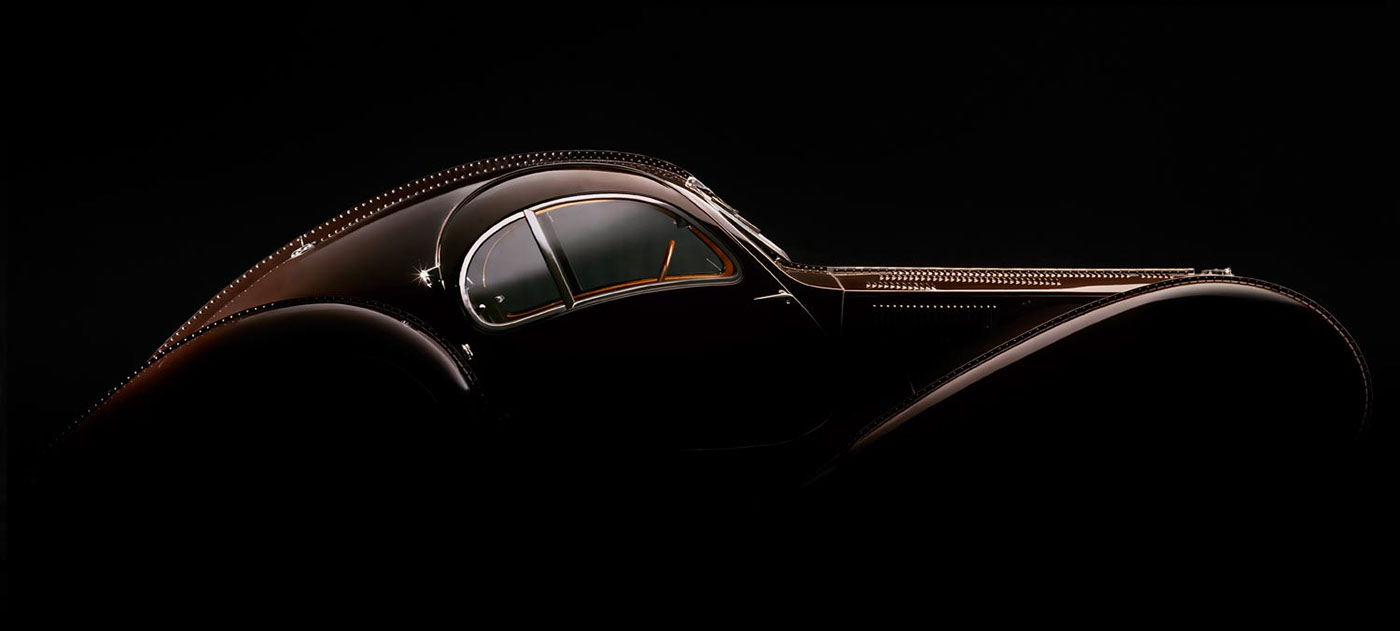

4 Wheels Drive Bugatti Type 32 Two Seater - Biplace Course "Tank" (1923) - Courtesy: Musée National de l’Automobile Mulhouse

Dashboard of a Bugatti Type 35B Grand-Prix (1927) - Courtesy: Musée National de l’Automobile Mulhouse

Bugatti Type 59/50B Grand Prix Single Seater - Monoplace Course (1938) - Courtesy: Musée National de l’Automobile Mulhouse

There has never been such an expensive car. Only seven Bugatti Royale were built, each one different. You can find it described in Rebus, a short tale by Antonio Tabucchi. Here an extract.
The Bugatti Royale according to Antonio Tabucchi
It really was a Bugatti Royale, a Coupè de Ville, I don’t know if that means anything to you Monsieur […] Albert couldn’t believe his eyes. It’s not possible It’s not possible, he repeated to himself, while stroking the long tempered bumpers. I don’t know if you understand, but a Bugatti gives one the idea of a woman’s body lying down on her back with her legs forward […] The elephant was missing from the bonnet, that was the only awful surprise. Maybe you may not know, or maybe you just haven’t noticed, that Bugatti had a figurine of a silver statue of an elephant on the bonnet, right on top of the radiator grill. It was a sculpture by Ettore’s brother, Rembrandt Bugatti. It wasn’t only a trademark, like the Rolls Royce Winged Victory of Samothrace or the Packard’s Swan, but a real symbol to be deciphered like every other symbol. It was an elephant standing on his back legs, with the erect trunk as a symbol of aggression and coupling.
Does it seem too easy of an explanation? Perhaps. But just think about it: a Bugatti Royale lying on its back, going slowly uphill, wings spread open, ready to speed up, ready for the thrill, with that fabulous radiator grill protecting its pulsating life and energy: and on the top an elephant with an erect trunk.
Testo originale in italiano
“Era proprio una Bugatti Royale, un coupé de ville, non so se a lei dice qualcosa, Monsieur (...) Albert non credeva ai suoi occhi, non è possibile, ripeteva, non è possibile, e accarezzava i parafanghi affusolati e lunghi, non so se lei riesce a capire, ma nella Bugatti c'è l'idea del corpo femminile, una donna, appoggiata sulla schiena con le gambe in avanti (...) Mancava l'elefante sul cofano, fu l'unica brutta sorpresa (...) Forse lei non lo sa, o non ci ha mai fatto caso, ma la Bugatti aveva sul cofano, proprio all'apice della volta della griglia, la statuetta d'argento di un elefante. Era una scultura del fratello di Ettore, Rembrandt Bugatti, e non era solo un marchio della casa, come la vittoria alata della Rolls o il cigno della Packard, quello era un vero simbolo, misterioso da decifrare come tutti i simboli, era un elefante in piedi sulle zampe posteriori e la proboscide eretta in un barrito di aggressione o di accoppiamento.
It really was a Bugatti Royale, a Coupè de Ville, I don’t know if that means anything to you Monsieur […] Albert couldn’t believe his eyes. It’s not possible It’s not possible, he repeated to himself, while stroking the long tempered bumpers. I don’t know if you understand, but a Bugatti gives one the idea of a woman’s body lying down on her back with her legs forward […] The elephant was missing from the bonnet, that was the only awful surprise. Maybe you may not know, or maybe you just haven’t noticed, that Bugatti had a figurine of a silver statue of an elephant on the bonnet, right on top of the radiator grill. It was a sculpture by Ettore’s brother, Rembrandt Bugatti. It wasn’t only a trademark, like the Rolls Royce Winged Victory of Samothrace or the Packard’s Swan, but a real symbol to be deciphered like every other symbol. It was an elephant standing on his back legs, with the erect trunk as a symbol of aggression and coupling.
Does it seem too easy of an explanation? Perhaps. But just think about it: a Bugatti Royale lying on its back, going slowly uphill, wings spread open, ready to speed up, ready for the thrill, with that fabulous radiator grill protecting its pulsating life and energy: and on the top an elephant with an erect trunk.
Testo originale in italiano
“Era proprio una Bugatti Royale, un coupé de ville, non so se a lei dice qualcosa, Monsieur (...) Albert non credeva ai suoi occhi, non è possibile, ripeteva, non è possibile, e accarezzava i parafanghi affusolati e lunghi, non so se lei riesce a capire, ma nella Bugatti c'è l'idea del corpo femminile, una donna, appoggiata sulla schiena con le gambe in avanti (...) Mancava l'elefante sul cofano, fu l'unica brutta sorpresa (...) Forse lei non lo sa, o non ci ha mai fatto caso, ma la Bugatti aveva sul cofano, proprio all'apice della volta della griglia, la statuetta d'argento di un elefante. Era una scultura del fratello di Ettore, Rembrandt Bugatti, e non era solo un marchio della casa, come la vittoria alata della Rolls o il cigno della Packard, quello era un vero simbolo, misterioso da decifrare come tutti i simboli, era un elefante in piedi sulle zampe posteriori e la proboscide eretta in un barrito di aggressione o di accoppiamento.

Divina Bugatti. Storia di un capolavoro della meccanica
Franco Maria Ricci, 1991
85 color tables reproducing photographs of various models by the famous automobile company in Molsheim
Binding in black “Orient” silk, with tipped-in color plate, impressed gold lettering and library case
Authors: G. Maghenzani, N. Steinhauser, P. Kestler, I. Ceci., A. Tabucchi
Hand-made, Ingres, Pastel Blue, manufactured by Cartiere Miliani in Fabriano
Photographs: Roberto Bigano
Pages: 127
ISBN IT 10: 8821601315
ISBN FR 13: 978-8821601316
Franco Maria Ricci, 1991
85 color tables reproducing photographs of various models by the famous automobile company in Molsheim
Binding in black “Orient” silk, with tipped-in color plate, impressed gold lettering and library case
Authors: G. Maghenzani, N. Steinhauser, P. Kestler, I. Ceci., A. Tabucchi
Hand-made, Ingres, Pastel Blue, manufactured by Cartiere Miliani in Fabriano
Photographs: Roberto Bigano
Pages: 127
ISBN IT 10: 8821601315
ISBN FR 13: 978-8821601316
See here how I worked
The basic concept is very simple. A white screen, larger as possible with two-four lights, possibly fresnel spotlights placed at the bottom of the screen to model the car with highlights and give structure to the image. Two more lights, spot or flood, set at the beginning of the screen to provide a basic fill lighting and color.
In Mulhouse 1991 and Castiglione 2009, the great star was the Avenger Butterly Modular Frame; it’s one of my workhorses. I use it as an immense reflector with a special white textile usually used for painted backgrounds in the film industry. Together with my Arri fresnel spotlights, it allows me ultra-fine lighting control on location. Because it’s modular and detachable, it fits in the trunk of my car. It’s fast to set up and fold out, ready to mount on stands in a few minutes. I usually used the 20×20 feet – 600×600 cm. version.

Above you can see the setting of the lights. Two or four in the back of the Butterfly to give shape with the lights. Two on the first part of the butterfly as a fill light.

For the left picture, I used only the “shape lights” placed on the back side of the Butterfly. We will call it, scheme 1. produces a dramatic result, very impressive. However, it ‘s not acceptable if you must describe the car. You can see the position of the lights in the table above.
For the picture on the right, I added the “fill lights” in the front part of the Butterfly. We will call this second one, scheme 2.
For the picture on the right, I added the “fill lights” in the front part of the Butterfly. We will call this second one, scheme 2.
Read more about Bugatti and automotive shooting on location
